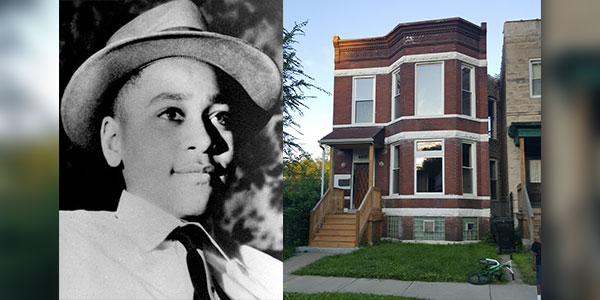-
Membership
Membership
Anyone with an interest in the history of the built environment is welcome to join the Society of Architectural Historians -
Conferences
Conferences
SAH Annual International Conferences bring members together for scholarly exchange and networking -
Publications
Publications
Through print and digital publications, SAH documents the history of the built environment and disseminates scholarship -
Programs
Programs
SAH promotes meaningful engagement with the history of the built environment through its programs -
Jobs & Opportunities
Jobs & Opportunities
SAH provides resources, fellowships, and grants to help further your career and professional life -
Support
Support
We invite you to support the educational mission of SAH by making a gift, becoming a member, or volunteering -
About
About
SAH promotes the study, interpretation, and conservation of the built environment worldwide for the benefit of all
The Society of Architectural Historians Supports the Designation of the Emmett Till House as a Chicago Landmark
Aug 28, 2020
by
SAH Heritage Conservation Committee
The SAH Heritage Conservation Committee has written a letter to the Mr. Rafael M. Leon, chair of the Commision on Chicago Landmarks, in support of the designation of the Emmett Till House as a Chicago Landmark.
The letter follows and is available as a PDF.

The letter follows and is available as a PDF.

Black and white photo of Emmett Till on the left. Emmett Till's house, located at 6427 S. St. Lawrence Avenue, Chicago, on the right.
28 August 2020
Mr. Rafael M. Leon, Chair
Commission on Chicago Landmarks
Cook County Building
121 N LaSalle St #1101
Chicago, IL 60602
ccl@cityofchicago.org
Re: Support for the Designation of the Emmett Till House, 6427 S. St. Lawrence Avenue, Chicago, IL, as a Chicago Landmark
Dear Mr. Leon:
The Society of Architectural Historians (SAH) strongly supports the proposed listing of the house in which Emmett Till was raised, located at 6427 S. St. Lawrence Avenue, Chicago, as a Chicago Landmark.
Emmett Till (25 July 1941–28 August 1955) grew up in Chicago. At age fourteen, while visiting relatives near Money, Mississippi, he was brutally murdered after being accused of offending a white woman in her family’s grocery store. His murderers were later acquitted. His mother’s decision to hold an open casket funeral in Chicago led to international condemnation of Till’s murder, highlighted the violence and brutality unleashed upon African Americans in the United States, and led to Till becoming a icon of the civil rights movement.
Till’s murder and funeral, followed by the acquittal of his murderers, received national and international news coverage; in particular, African American newspapers such as the Chicago Defender covered the events extensively, and called on their readers to react to the acquittal by voting in large numbers. Till’s death reverberated throughout African American communities, and led to protests and civil disobedience. Rosa Parks attended a rally for Till in Montgomery, led by Martin Luther King, Jr. Soon after, she refused to yield her seat on a segregated bus to a white passenger, leading to a year-long boycott of the Montgomery bus system. Parks, when asked to recount why she would not give up her seat and move to the back of the bus, recalled “I thought of Emmett Till and I just couldn’t go back.”
Emmett Till’s murder, and the events that followed in its wake, are of national and international significance. Bestowing Chicago Landmark status upon 6427 S. St. Lawrence Avenue would acknowledge Till’s life in Chicago, and call attention to the brief life that preceded his brutal murder. Such a designation would help to tell Till’s story, including the terrible events that led to his death, the denial of justice embodied in his murderers’ acquittal, and Till’s posthumous emergence as an icon of the civil rights movement. The house in which Till was raised is of national, even international, significance, as the physical place most associated with his life. Few of the physical places associated with Till’s murder survive. Bryant’s Grocery, where the encounter that set into motion the fatal events has collapsed into a ruin; the Ben Roy Service Station, next to the grocery story, where Till encountered his accuser, has been demolished (and recently reconstructed), making the house at 6427 S. St. Lawrence Avenue an even more significant connection to Till’s life.
SAH joins with our colleagues at Preservation Chicago, the Hyde Park Historical Society, Ald. Jenette Taylor (20th), and all citizen efforts to list 6427 S. St. Lawrence Avenue as a Chicago Landmark. Listing will do much to commemorate not just the death of Till, but his life and its legacy. As our country goes through a painful soul-searching in reaction to the murders of George Floyd, Tamir Rice, Breonna Taylor, Michael Brown, Eric Garner, and so many others, granting this dignity and reverence to the place where Emmett Till was raised is a small but necessary step toward national acknowledgment of the violence that has long defined the Black experience in America.
Sincerely,
Bryan Clark Green, Ph.D., LEED AP BD+C
Chair, Society of Architectural Historians Heritage Conservation Committee
cc: Mr. Kenneth Breisch, Ph.D.; Mr. Jeffrey Cody, Ph.D.; Mr. Anthony Cohn, AIA; Mr. David Fixler, FAIA; Ms. Priya Jain, AIA; Mr. Theodore H. Prudon, Ph.D., FAIA, Ms. Pauline Saliga; Ms. Deborah Slaton; Ms. Victoria Young, Ph.D.; Members, SAH Heritage Conservation Committee; Ald. Jeanette Taylor (20th), City of Chicago; Mr. Ward Miller, Executive Director, Preservation Chicago; Ms. Michal Safar, President, Hyde Park Historical Society
Learn more about the preservation advocacy work of the Society of Architectural Historians.

